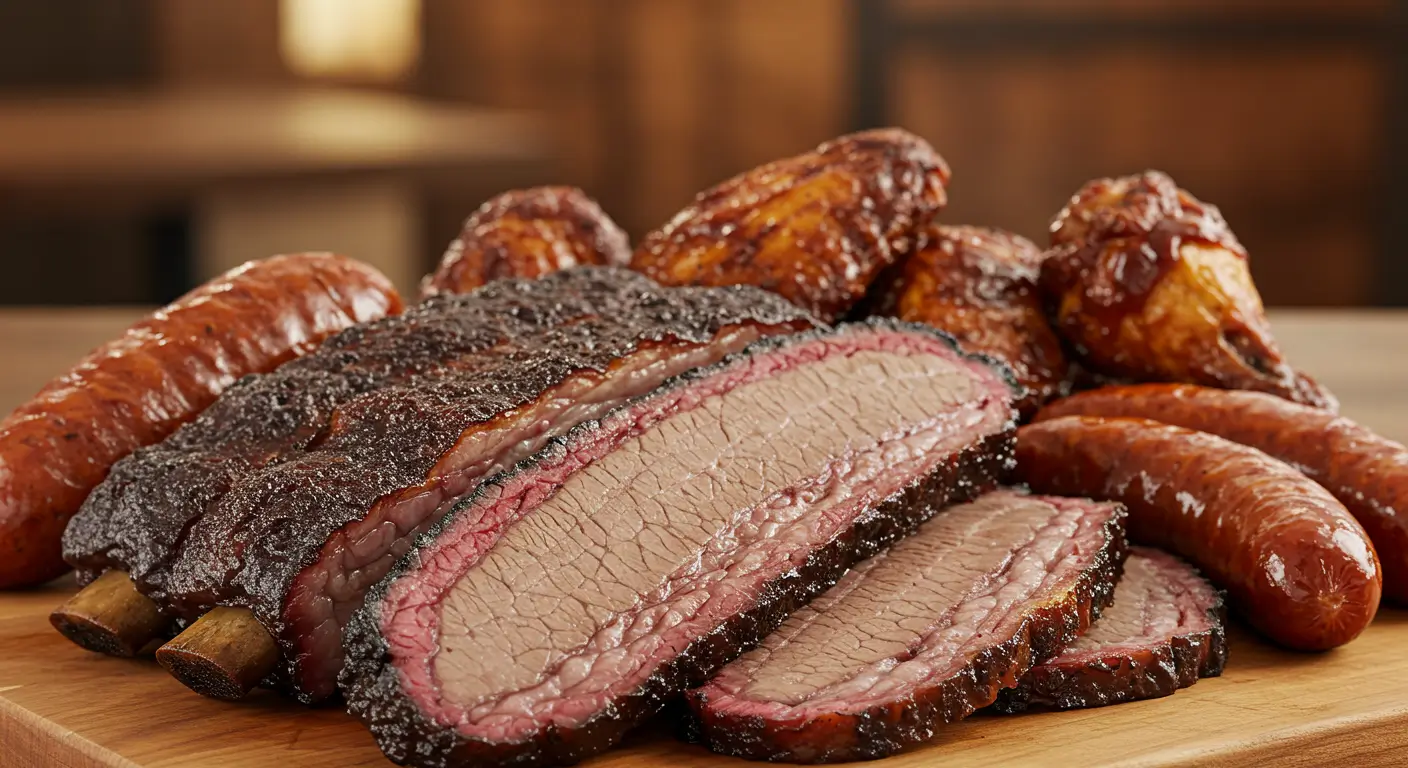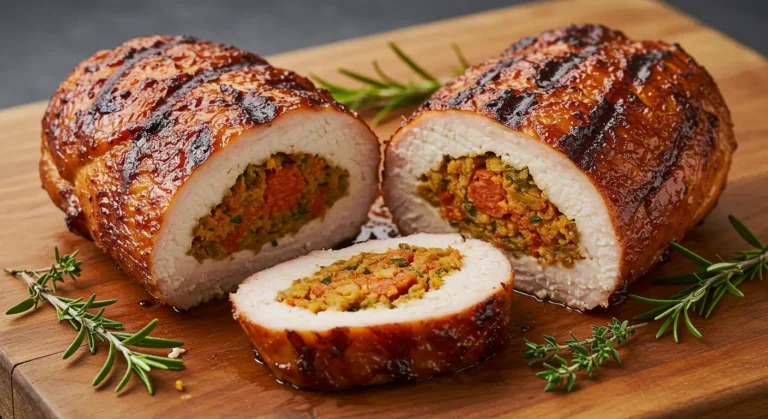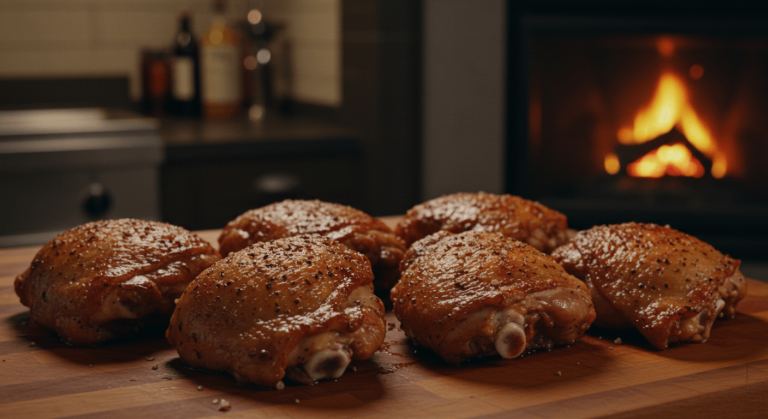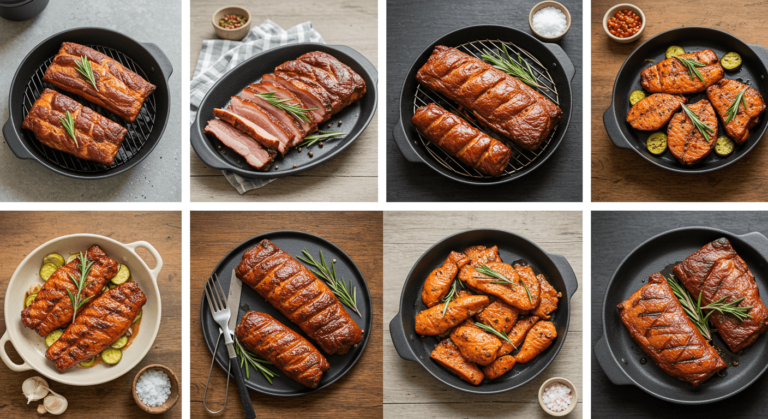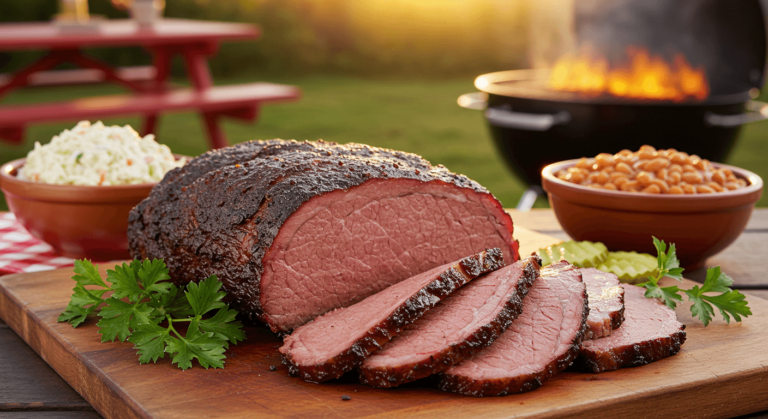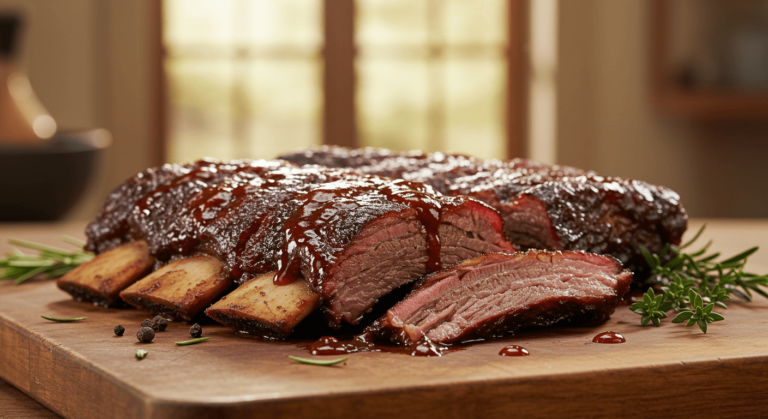The Ultimate Guide to Smoked Meats: Mastering the Art of Flavor
There’s something almost primal about the smell of smoked meat wafting through the air. That distinctive aroma triggers something deep in our senses—a connection to cooking traditions that stretch back thousands of years. The gentle curl of smoke, the glistening surface of a perfectly rendered piece of meat, and that first tender bite revealing a pink smoke ring. These moments represent culinary perfection for many food enthusiasts.
Welcome to your comprehensive guide to the world of smoked meats. Whether you’ve just purchased your first smoker or you’ve been tending fires for years, this guide will take your smoking game to the next level. As someone who has spent decades experimenting with different woods, meats, and techniques, I’m excited to share what distinguishes truly exceptional smoked meat from the merely good.
Throughout this guide, we’ll explore the fundamentals of smoking, dive into equipment options, and walk through recipes ranging from approachable weekend projects to competition-worthy centerpieces. By the end, you’ll have both the confidence and knowledge to create memorable meals that will have friends and family requesting your secrets.
What Makes Smoking Different From Other Cooking Methods?
How does smoking meat actually work? When we talk about smoking foods, we’re referring to a slow cooking process where meat is cooked at low temperatures (typically 225-275°F) while being bathed in flavorful wood smoke. Unlike grilling, which applies direct, high heat for a relatively short time, smoking is a marathon rather than a sprint.
During the smoking process, several transformations occur simultaneously:
- Tough collagen in muscle fibers breaks down into gelatin, creating tenderness
- Fat renders slowly, basting the meat from within
- Smoke particles adhere to the surface, creating complex flavor compounds
- The outer surface undergoes the Maillard reaction, developing a flavorful “bark”
As John Hendrix, pitmaster at Texas Monthly’s top-rated Snow’s BBQ once told me, “Smoking isn’t cooking with fire—it’s cooking with time.”
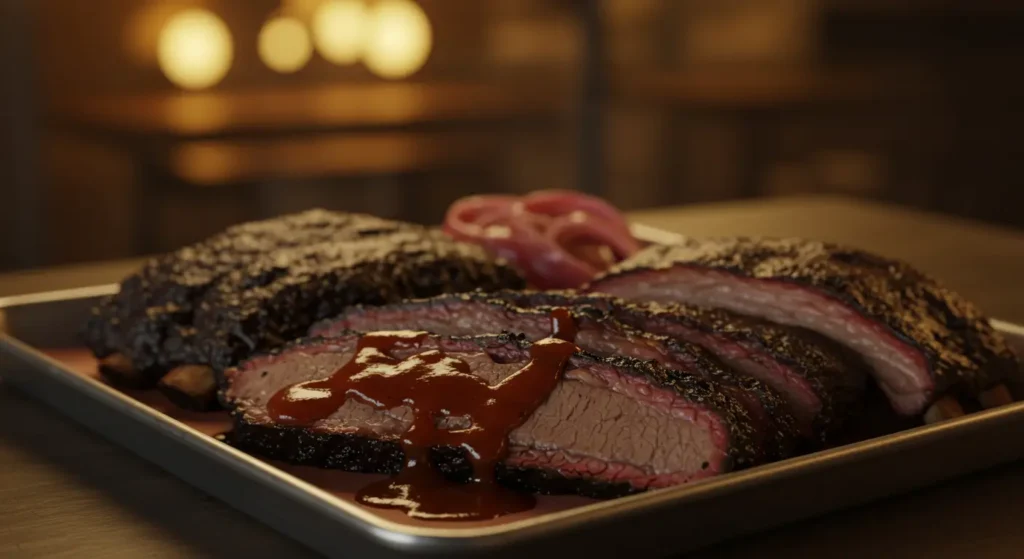
The Art and Science of Smoking Food
Understanding Wood Types and Flavor Profiles
The type of wood you choose serves as the foundational flavor element in smoked meats. Each variety imparts distinctive characteristics:
- Hickory: Robust, bacon-like flavor that pairs well with beef; the traditional choice for many BBQ competitions
- Oak: Medium strength with reliable performance; the workhorse of smoking woods
- Mesquite: Intensely earthy and bold; use sparingly to avoid overwhelming foods
- Apple: Mild and sweet with fruity undertones; excellent with chicken and turkey
- Cherry: Creates a beautiful mahogany color with subtle sweetness
- Maple: Light and slightly sweet; good for poultry and vegetables
- Pecan: Rich and nutty; a southern favorite that works well with beef and chicken
“The wood you choose is like picking a wine to complement your meal,” explains championship pitmaster Tuffy Stone. “Each brings its own character to the party.”
Temperature Control: The Key to Success
Maintaining a steady temperature throughout the smoking process separates masterful results from mediocre ones. Most premium smoked meats are cooked in the 225-275°F range, allowing sufficient time for proper rendering and tenderization without drying the meat.
Digital thermometers with dual probes offer the most reliable way to monitor both your smoker’s ambient temperature and the internal temperature of your meat. Many experts recommend against relying solely on the thermometer built into your smoker, as these are often inaccurate by 25°F or more.
The “Stall” Phenomenon
Perhaps the most mysterious aspect of smoking large cuts of meat is “the stall”—a period where the internal temperature stops rising, often around 150-170°F, despite the smoker maintaining consistent heat. This plateau can last several hours and has frustrated countless beginners.
The science behind the stall is actually straightforward: as moisture evaporates from the meat’s surface, it creates a cooling effect (evaporative cooling) that temporarily counteracts the heat from the smoker. Professional pitmasters handle the stall in several ways:
- Patience: Simply waiting it out (the traditional approach)
- The Texas Crutch: Wrapping the meat tightly in foil or butcher paper to prevent evaporation
- Increasing smoker temperature: Providing more heat to overcome the cooling effect
Ventilation Adjustments for Optimal Results
Proper airflow through your smoker affects both temperature control and smoke quality. Too little airflow creates stagnant, bitter smoke that can impart acrid flavors. Too much causes temperatures to rise rapidly and can waste fuel.
For most smokers, start with the exhaust vent fully open and use the intake vent to control temperature. Adjust incrementally—small changes can have significant effects after 15-20 minutes.
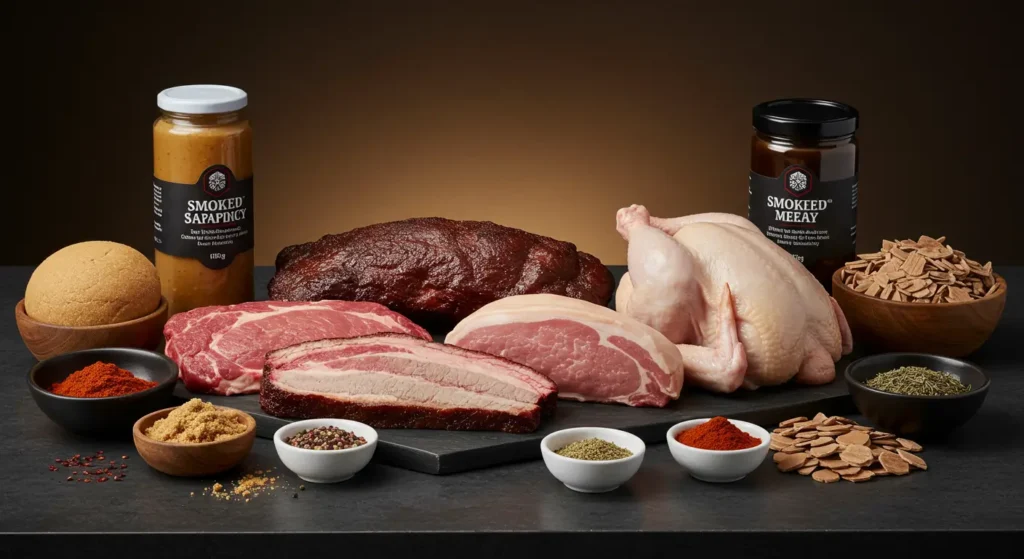
What Are the Different Types of Smokers Available?
Offset Smokers
Often called “stick burners,” these traditional horizontal smokers feature a firebox attached to the side of the main cooking chamber. Smoke travels horizontally across the meat before exiting through a chimney.
Best for: Traditional smoking purists who enjoy managing a fire and appreciate the authenticity of wood-only cooking Challenges: Requires frequent attention and temperature management
Electric Smokers
These plug-in units use heating elements rather than fire to generate heat, while wood chips in a small tray provide smoke.
Best for: Beginners, apartment dwellers, and those who prefer “set and forget” convenience Challenges: Less authentic flavor profile and limited bark development
Pellet Smokers
These increasingly popular units use compressed wood pellets as both fuel source and flavor enhancer, with automated feeding systems maintaining temperature.
Best for: Cooks who want wood-fired flavor with digital precision Challenges: Power dependency and less intense smoke flavor than some alternatives
Kettle Smokers
Standard charcoal grills repurposed for smoking through various methods like the “snake method” of arranging charcoal.
Best for: First-time smokers who already own a charcoal grill Challenges: Temperature stability and limited capacity
Ceramic Kamado Smokers
These egg-shaped, ceramic-walled smokers offer excellent heat retention and efficiency.
Best for: Versatility and fuel efficiency in various weather conditions Challenges: Higher initial investment and significant weight

Propane Smokers
Vertical cabinet smokers fueled by propane tanks with a dedicated drawer for wood chips.
Best for: Portable smoking needs and consistent temperature control Challenges: Regular replacement of propane tanks for long cooks
Drum Smokers
Often homemade or from kits, these vertical units provide excellent results with minimal complexity.
Best for: Space-efficient smoking with excellent temperature stability Challenges: Limited capacity for very large cuts
What Are the Essential Smoker Recipes Everyone Should Master?
Perfect Smoked Beef Brisket
Perhaps the most revered cut in the smoking world, brisket represents the pinnacle of smoking craftsmanship.
Ingredients:
- 12-14 lb whole beef brisket (packer cut with point and flat)
- 1/4 cup kosher salt
- 1/4 cup coarse black pepper
- 2 tablespoons garlic powder
- 2 tablespoons onion powder
Preparation:
- Trim the fat cap to 1/4-inch thickness
- Remove excessive hard fat between the point and flat
- Apply rub generously to all surfaces
- Allow meat to come to room temperature (about 1 hour)
Smoking Instructions:
- Preheat smoker to 250°F using oak or hickory wood
- Place brisket fat-side down (or fat-side up if heat comes from above)
- Smoke until internal temperature reaches 165°F (approximately 6-8 hours)
- Wrap tightly in butcher paper
- Continue smoking until internal temperature reaches 203°F (another 4-6 hours)
- Rest wrapped in an insulated cooler for at least 1 hour before slicing
Pro Tip: Slice brisket perpendicular to the grain, which changes direction between the point and flat sections. Make a small cut to mark the grain direction before smoking.
Smoked Beef Ribs
Ingredients:
- 1 rack beef plate ribs (approximately 4-5 pounds)
- 2 tablespoons kosher salt
- 2 tablespoons coarse black pepper
- 1 tablespoon garlic powder
Smoking Instructions:
- Preheat smoker to 275°F using oak wood
- Apply rub generously
- Place ribs bone-side down
- Smoke until internal temperature between bones reaches 205°F (approximately 6-8 hours)
- Rest for 30 minutes before serving
Pro Tip: Look for beef plate ribs (not back ribs) with significant meat above the bone for the best eating experience.
Perfectly Smoked Chicken
Ingredients:
- 1 whole chicken (4-5 pounds)
- 2 tablespoons olive oil
- 2 tablespoons poultry seasoning
- 1 tablespoon kosher salt
- 1 teaspoon black pepper
- 1 lemon, halved
Preparation:
- Spatchcock the chicken by removing the backbone
- Rub oil over entire surface
- Season thoroughly
- Place lemon halves under the skin of the breast
Smoking Instructions:
- Preheat smoker to 325°F using apple or cherry wood
- Place chicken skin-side up
- Smoke until breast reaches 160°F and thighs reach 175°F (approximately 1.5-2 hours)
- Rest for 15 minutes before carving
Pro Tip: Higher smoking temperatures (300-325°F) create better chicken skin texture than traditional low-and-slow temperatures.
Smoked Turkey Breast
Ingredients:
- 1 bone-in turkey breast (5-7 pounds)
- 2 tablespoons butter, softened
- 2 tablespoons kosher salt
- 1 tablespoon maple sugar
- 1 tablespoon dried thyme
- 1 teaspoon black pepper
Smoking Instructions:
- Brine turkey breast overnight in a solution of 1 cup salt, 1 cup sugar, and 1 gallon water
- Rinse and pat dry
- Apply butter under skin
- Season exterior
- Smoke at 275°F using apple or pecan wood
- Cook until internal temperature reaches 165°F (approximately 3-4 hours)
- Rest for 20 minutes before slicing
Pro Tip: Slicing turkey breast against the grain significantly improves texture and tenderness.
What Are the Best Meats for Smoking?
Beef Cuts Ideal for Smoking
- Brisket: The king of BBQ; requires patience but delivers incredible reward
- Beef Ribs: Massive flavor with prehistoric presentation
- Chuck Roast: “Poor man’s brisket” with excellent marbling
- Prime Rib: Luxurious special-occasion centerpiece
- Beef Cheeks: Collagen-rich cut that becomes butter-tender when smoked
Wood pairings: Oak, hickory, mesquite (use sparingly), pecan
Poultry Options
- Whole Chicken: Versatile canvas for smoke flavors
- Turkey Breast: Lean but can remain juicy with proper technique
- Duck: Rich meat that pairs beautifully with fruit woods
- Chicken Thighs: Forgiving cut for beginners
Wood pairings: Apple, cherry, maple, peach
Game Meats
- Venison Roasts: Lean cuts benefit from bacon wrapping or butter basting
- Bison: Similar to beef but leaner; avoid overcooking
- Lamb: Distinctive flavor that pairs wonderfully with smoke
- Wild Turkey: More flavorful than domesticated varieties
Wood pairings: Oak, hickory, mesquite (use sparingly)
Why Stop at Meat? Vegetables and Seafood in Your Smoker
Smoked Vegetables
Vegetables absorb smoke flavors beautifully, often requiring just 30-60 minutes at 225-250°F:
- Bell Peppers: Develop sweet, complex flavors
- Onions: Become jammy and intensely flavorful
- Corn on the Cob: The essence of summer dining
- Mushrooms: Absorb smoke readily; portobello caps are excellent
- Tomatoes: Gain complexity for sauces and salsas
- Squash: Both summer and winter varieties smoke well
Seafood Smoking Techniques
Hot Smoking Seafood (140-180°F)
- Salmon: One of the most popular smoked seafoods; ready in 1-2 hours
- Trout: Delicate texture and excellent smoke absorption
- Shrimp: Quick-smoking appetizer option (just 20-30 minutes)
- Sea Bass: Buttery texture that carries smoke beautifully
Cold Smoking Seafood (65-85°F)
- Salmon for Lox: Requires curing before cold smoking
- Scallops: Brief cold smoking creates delicate flavor
- Oysters: Smoke for 30-45 minutes for cocktail hour treats
Creative Applications Beyond the Ordinary
- Smoked Salt: 2-3 hours of cold smoke transforms ordinary salt
- Smoked Butter: Cold-smoke for 30 minutes for compound butter applications
- Smoked Ice: Use cold smoke on ice for unique cocktails
- Smoked Cream: For incredible ice cream base
- Smoked Olive Oil: For finishing dishes with smoky essence
What Are Some Foolproof Beginner Recipes?
Smoked Chicken Quarters
Why it’s beginner-friendly: Affordable, relatively quick, and very forgiving Smoking time: 1.5-2 hours at 275°F Target temperature: 175°F in thigh Wood recommendation: Apple or cherry
Smoked Beef Chuck Roast
Why it’s beginner-friendly: Similar to brisket but smaller, faster, and more affordable Smoking time: 5-6 hours at 250°F Target temperature: 203°F Wood recommendation: Oak or hickory
Smoked Salmon Fillets
Why it’s beginner-friendly: Quick cooking time with impressive results Smoking time: 1-2 hours at 225°F Target temperature: 145°F Wood recommendation: Alder or apple
Common Beginner Mistakes to Avoid
- Opening the smoker too frequently: “If you’re lookin’, you ain’t cookin'”
- Ignoring temperature accuracy: Invest in a good digital thermometer
- Too much smoke: Clean blue smoke is better than billowing white smoke
- Not preparing properly: Organization makes smoking day much easier
- Skipping the rest period: Perhaps the most common mistake that affects texture
“Everyone’s first brisket is a learning experience, not a masterpiece,” says Aaron Franklin of Franklin Barbecue. “By your third one, you’ll start to understand the process intuitively.”
Advanced Recipes for Special Occasions
Competition-Style Smoked Beef Brisket
This technique incorporates multiple phases and careful temperature management for exceptional results:
- Start with USDA Prime or better brisket with excellent marbling
- Apply slather of mustard and Worcestershire
- Season with complex rub featuring 8+ ingredients
- Smoke at precisely 250°F using post oak
- Spritz hourly with apple cider vinegar/water mixture
- Wrap at perfect bark formation (typically 165-170°F internal)
- Monitor carefully for probe tenderness around 203°F
- Extended rest period of 3+ hours in a cambro or cooler
Smoked Beef Dinosaur Ribs
These massive plate ribs (often 2-3 pounds each) create a prehistoric presentation:
- Season with salt and pepper 12-24 hours before smoking
- Smoke at 275°F for approximately 8 hours
- Spritz with beef stock hourly
- Ready when internal temperature reaches 205-210°F and probe slides in like butter
Smoked Thanksgiving Turkey
Transform holiday traditions with this applewood-smoked whole turkey:
- Dry brine for 24 hours (½ tablespoon kosher salt per pound)
- Inject with herb butter mixture
- Smoke at 325°F until breast reaches 165°F
- Rest for at least 30 minutes before carving
Smoked Ice Cream
Yes, you can incorporate smoke into desserts!
- Cold smoke heavy cream for 30 minutes using apple wood
- Prepare standard ice cream base using the smoked cream
- Churn according to ice cream maker instructions
- Serve with chocolate-covered bacon or candied pecans
Key Principles to Remember
As you build your smoking skills, keep these foundational principles in mind:
- Temperature control is everything: Consistency produces predictable results
- Quality matters: Start with good ingredients, end with good food
- Patience is non-negotiable: Rushing ruins great BBQ
- Rest is essential: It’s not done when it leaves the smoker
- Develop your style: Use recipes as guidelines, not laws
The smoking community is one of the most welcoming in the culinary world. Online forums, competitions, and backyard gatherings provide endless opportunities to share techniques and stories.
Frequently Asked Questions
Have You Tried This Recipes!
There are no reviews yet. Be the first one to write one.

